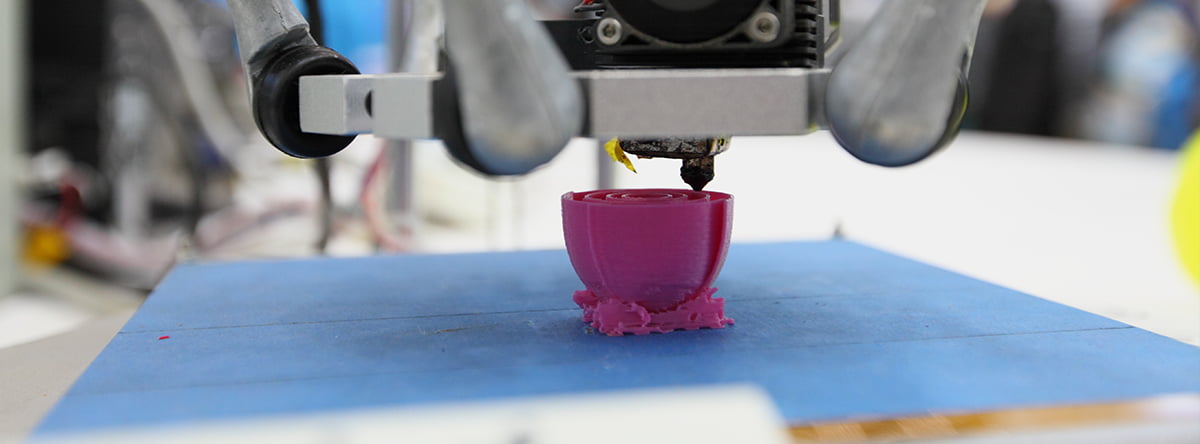The FDA has approved the first 3D printed object that is allowed for human consumption, and what it is might shock you.
The prescription pill called Spritam is made by a pharmaceutical company named Aprecia. The medication is used to treat epilepsy in children and adults, and Aprecia now has the FDA’s approval to 3D print it.
3D printing the prescription drug will allow the doctors to have more control over the dosage. Spritam is also printed with an easily dissolvable compound, which means the pills can be smaller than the typical epilepsy pill. Seizure medication is normal in the form of a large, hard to swallow pill. Spritam will make it easier for children and adults with epilepsy to take their prescription.
While this is the first drug of its kind, the idea has been floating around for a while.
In 2012 Lee Cronin, a chemist from the University of Glasgow, gave a TED Talk about creating a 3D printer that could assemble chemical compounds on the molecular level. He believes that this will revolutionize medicines distribution model.
Cronin told Vice Magazine, “In the future, we will not sell drugs, but blueprints or apps. These apps would be tested or validated in the lab before being deployed.”
Unlike the work done by Aprecia, Cronin envisions a blueprint database, where a patient can upload his or her prescription and the 3D printer, which is equipped with “chemical ink,” will print the medication needed.
Possible Positive Outcomes of 3D Printing
There are many positives to being able to print prescriptions at home. Eventually, the prescriptions will be able to be modified to fit the patient perfectly. Lets say a patient is allergic to one compound that is used in the medication, then the doctor can select a different option for that compound. Allowing that patient to take the medication that is modified specifically for him or her.
With the 3D printing of prescriptions in the form Cronin sees it, Big Pharma’s hold on medications will loosen. If that happens cost of prescriptions will go down, allowing more people access to the medications they need.
It will also be a benefit to the average sick patient who goes to see the doctor because they are feeling under the weather. The ability to 3D print the medication takes away the necessity to drop off the prescription at the pharmacy and go back to pick it up later, which will let the patient rest, recover and not have to worry about going back out.
Cronin sees the accessibility to 3D printers in the future being much like smart phones. At first very few people had them, but after a few years it was common for the every-man to have one.
Possible Negative Outcomes of 3D Printing
As with most things, there will always be people who take a good thing and abuse it. Being able to print your own prescriptions will not be the exception.
With the availability of the blueprint online, there will eventually be people who figure out how to get them without the prescription. Even with regulations and precautions taken, someone who is determined will find a way to get the blueprint. Just like how people today have found ways around getting prescription medication with no prescription. If they can get their hands on the prescription drug when they are currently distributed by pharmacies, they will be able to do it easier if they can print them at home.
Cronin said in an interview with Vice that the use of the 3D printer to print prescription drugs that are not prescribed can be stopped.
“You just link the ink production and software and encrypt them.”
He also said “It could work like with Apple securing the iPhone from unauthorized apps.”
As most people know, you can jailbreak the iPhone to get around that.
Another complication to the availability of 3D printing prescription drugs at home is the possibility of people making their own blueprints. Just like people do today by creating designer drugs such as Flakka, Bath Salts, Ecstasy and even Methamphetamine. The makers take different compounds, mix them together and come up with something new.
Sometimes these new synthetic drugs are considered a legal substance because the compounds used to create them are not illegal, yet. That being said, once one of these new drugs start to gain traction, they are eventually deemed illegal substances.
Designer drugs poise a special danger because the user is never quite sure what is actually in them, and since they are somewhat new the effects on the body are not well known.
The 3D printed prescription drug Spritam being approved by the FDA doesn’t implement the possible negative outcomes that creating the blueprint data base envisioned by Cronin will. Spritam will be printed by the pharmaceutical company Aprecia, maybe eventually the doctors who are proscribing it and it’s not available to be at home.
3D printing is opening amazing doors in the medical community, allowing doctors to fine tune doses and medications to fit a specific patient will revolutionize treatments. However, allowing the everyday person to have that technology at home, might not be the next best advancement.
Do you think the blueprint data base is a good idea or will it have a more negative effects?







